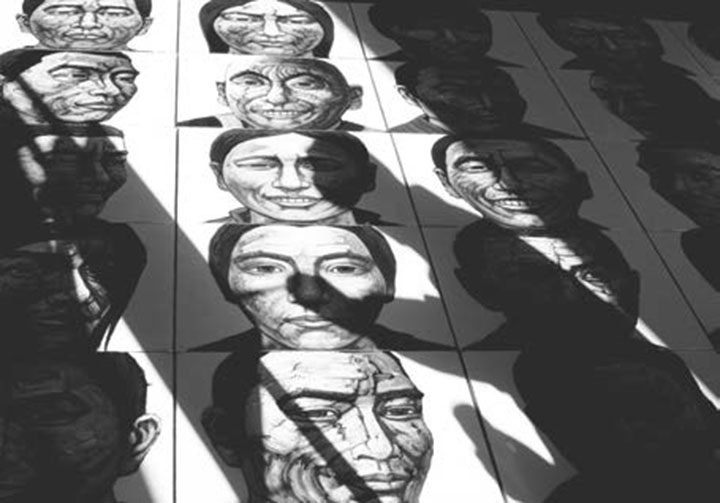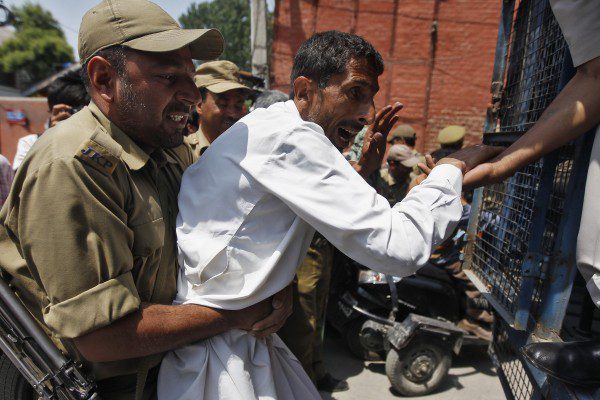Recent incidents of self-immolation by Tibetans may have weakened their movement for freedom, by causing severe loss to life without causing much of a dent in the Chinese occupation. The movement needs to be re-imagined, if it has to sustain itself, opines Dibyesh Anand.
More than 124 Tibetans have set themselves on fire calling for freedom in Tibet and the return of the Dalai Lama. China has responded by further tightening its control over Tibetan areas even though it was its draconian rule and absence of avenues to express dissenting views that led to the self-immolations in the first place. International community does not seem to care and President Obama’s silence is a good illustration of this unwillingness to speak out for Tibetans.
Even if foreign governments call for China to allow an independent fact finding mission, no one is under any illusion that they will actually be allowed in or that their results would be accepted. The fate of Nobel Peace Prize winner Liu Xiaobo illustrates how China reacts to foreign pressure.
Self-immolations by Tibetans prompted Senator John Mc- Cain earlier in 2013 to speak bluntly to the Chinese vice foreign minister Zhang Zhijun that ‘the Arab spring is coming to China’. McCain captured the hope that many Tibetans and their sympathisers had about self-immolations as marking the beginning of a new era in their struggle for freedom against the Chinese government. Not surprising therefore that Lobsang Sangay, the Prime Minister of Tibetan government in exile based in Dharamsala, tweeted immediately calling the Senator a ‘good person and Tibet’s friend’. Many Tibetan activists have argued that it often takes a single act of courage to make the monolith of an authoritarian system crumble and they point toward the example of the Tunisian street vendor Mohamed Bouazizi whose self-immolation triggered the collapse of the dictatorial regime of Ben Ali and marked the beginning of the Arab spring. The hope is for a Tibetan spring if not a Chinese spring. This analogy is not only problematic but dangerous since it facilitates a framing of self-killing as a higher form of patriotism without having any impact on Chinese authoritarianism. This analogy is based on a forgetting of the fact that Chinese rule over Tibet does not derive its legitimacy from Tibetan people.
Even though, self-immolations challenge the Chinese propaganda that ‘new Tibet’ is a land of milk and honey populated by forever grateful happy Tibetans while exposing the brutality of Chinese rule to anyone who cares to listen and also mobilise the wider Tibetan population, these acts are unlikely to lead to a moderation of Chinese hardline policies.
Even though self-immolations challenge the Chinese propaganda that ‘new Tibet’ is a land of milk and honey populated by forever grateful happy Tibetans while exposing the brutality of Chinese rule to anyone who cares to listen and also mobilise the wider Tibetan population, these acts are unlikely to lead to a moderation of Chinese hardline policies. The nature of Chinese occupation of Tibet is such that even hundreds of thousands of Tibetan self-immolations will not have any salutary effect on China. It is not surprising that the Dalai Lama in an interview to the BBC in summer last year expressed his view that courage does not translate into wisdom and more recently the Tibetan Parliament in Exile urged Tibetans inside Tibet not to give up their lives.
People’s Republic of China’s so-called liberation of Tibet in 1950s followed on from various factors including a longer pedigree of Chinese nationalism that considered Tibetans to be essential to modern China, Mao’s strategic calculation that saw Tibet as too big and too important to be left unoccupied, communism’s own brand of social Darwinism that takes away the agency of progress from the people and vests it into the Party, and Han chauvinism that treats Tibetans as barbarians who need paternalism. Tibetan lives remain expendable for Beijing. As the history of Chinese rule over Tibet in general and the brutal killings of Tibetans around the 1959 period show, the regime will not hesitate in killing large number of Tibetans.
Ben Ali was a Tunisian dictator who was forced to move out when majority of people in the country rose up against him. Some other Arab dictators lost due to mass uprising of the citizens or because of foreign military intervention. In case of Tibet, the international community has no will to intervene and self-immolations are not going to generate a solidarity uprising amongst the Han Chinese and therefore it is naive to believe that an uprising of less than one percent of population will have an impact on a rapidly rising global power. But they will certainly transform the Tibet movement.
Tibetans like the Dalai Lama who seek to promote understanding and accommodation with the Chinese are a real threat to the Chinese rule.The Chinese can wait and watch Tibetans killing themselves as in the present. What Beijing hardliners cannot do is allow the Dalai Lama’s middle path approach to reach out to the Chinese public. There is a multi- billion dollar industry populated by officials, academics, Tibetologists, and media commentators inside China whose only task is to blame the Dalai Lama for everything and denounce him. It is therefore not surprising that following on from self-immolations, instead of any self-reflection, the industry continues to blame the Dalai Lama.
This is ironic since radicalisation of the Tibet movement as reflected by self-immolations poses the most serious challenge to the Dalai Lama. Not to his status as the symbol of the Tibetan nation or him as a religious leader but his entire strategy of negotiating with Beijing and working out a compromise. While the self-immolating Tibetans call for the return of their beloved leader to Tibet, their acts are reminders of an absence of any middle ground in the face of absolute refusal of Beijing to negotiate with sincerity. The only thing that keeps the middle path approach from being exposed as a complete failure is the Dalai Lama’s insistence on it. With increasing self-immolations, the goal of Tibet movement is shifting from freedom within China to freedom from China but the new democratic leadership in exile has shown itself incapable of appreciating this change and offering new ideas or strategies. Beijing of course has shown no inclination to improve the situation. It has refused to offer even a sliver of hope. Not only has it ratcheted up its shrill blame game against the Dalai Lama and refused to offer a single modest concession, but it has revealed an appetite to adopt an even more militarised approach in the affected Tibetan areas. There is thus an impasse. An impasse that will see more Tibetans burning themselves while the Chinese leaders parrot the line that Tibetans are happy people.
A strategic retreat and a rethinking of other effective modes of protest may be essential if the Tibetan movement for freedom is to remain sustainable. The most important ingredient in a political struggle, especially one that is going to be long, is life.
What Beijing hardliners cannot do is allow the Dalai Lama’s middle path approach to reach out to the Chinese public. There is a multi-billion dollars industry populated by officials, academics, Tibetologists, and media commentators inside China whose only task is to blame the Dalai Lama for everything and denounce him.
Dibyesh Anand is the Head of the Department of Politics and International Relations and an Associate Professor at London’s Westminster University and the author of Geopolitical Exotica: Tibet in Western Imagination


